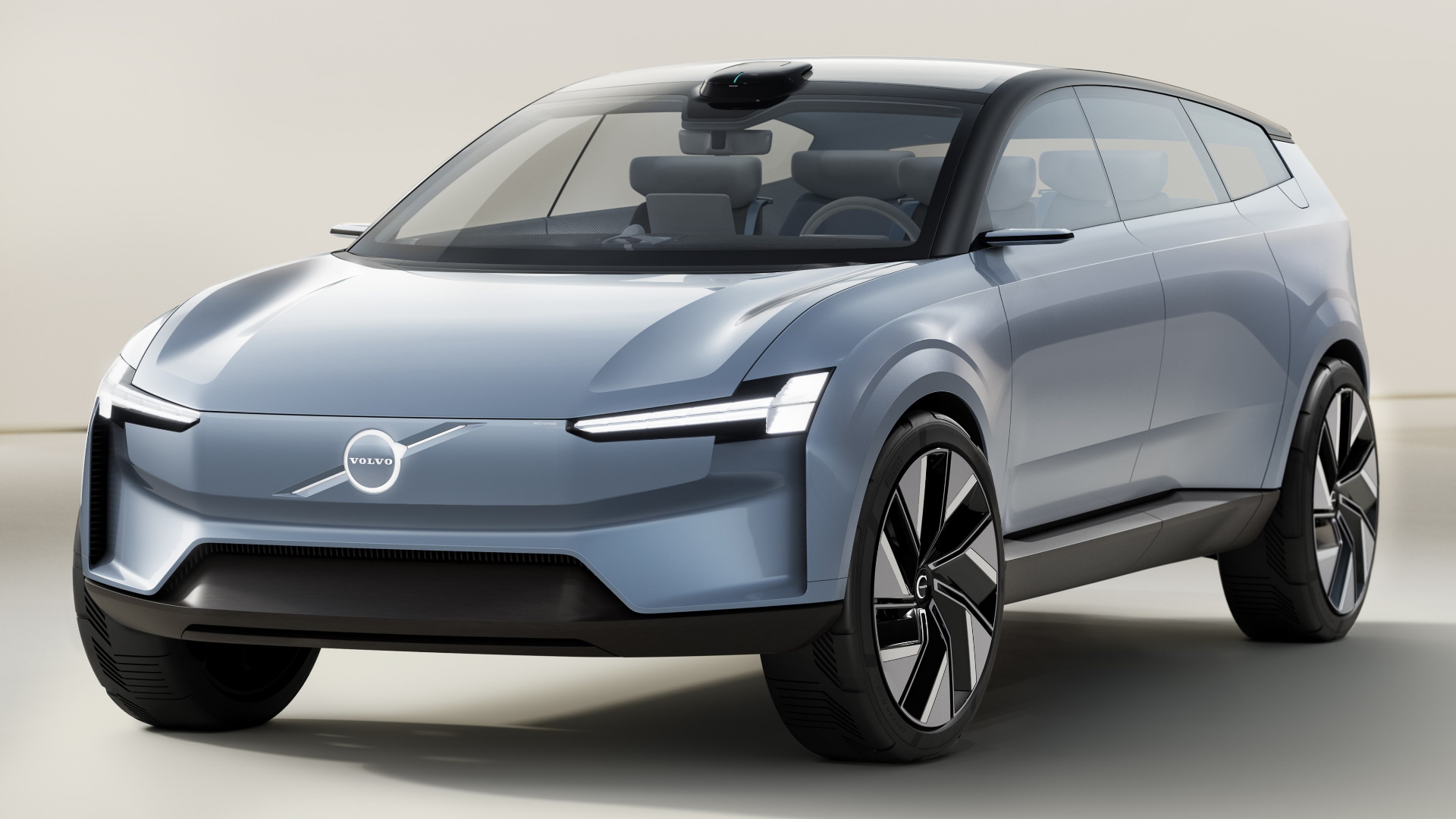

Volvo is a company with a distinct design language, with cars like the new C40 Recharge standing out aesthetically despite the onslaught of new small SUVs and crossovers. But while that C40 is electric, it’s built on a hybrid platform meant to accommodate two decidedly different drivetrains. As such, it’s designed much like a regular gasoline-engined car. That’s not the case with Volvo’s latest Concept Recharge.
The Concept Recharge is the Swedish automaker’s first real ground-up crack at designing an electric vehicle, albeit not for production purposes. And while the concept itself won’t go into production, the automaker says that much of what you see here will end up in future Volvos. It’s got flat foors, seats that look like furniture, and interior space more similar to a living room than what we’re all used to commuting in.

Really, this concept is an aesthetic exercise based on the new set of parameters that EV drivetrains offer. No big engine or transmission over the front axle means more interior space, and a battery placed in the floor opens up the inside even more. As a result, Volvo’s designers—lead by design chief Robin Page—are free to use the space however they please.
That means we inch closer to the “lounge on wheels” that automotive interior designers have been experimenting with for decades, and we see new sustainable materials not yet widespread in automotive manufacturing. It also means exterior changes as well. Obviously there’s no radiator grille, but somewhat similar to the C40 Recharge there’s a slightly sloped roofline and other details meant to boost electric range. Volvo says “a set of wings” extends at high speeds to manage drag, while other futuristic tech bits like a LiDAR sensor are integrated into the exterior as well. In the front view of the vehicle above, it’s a hard to miss the associated bump on the car’s roof.





Volvo says all of this adds up to point towards the future—a future where all Volvos will be safer, more sustainable, and just a tad flashier than the diesel-powered bricks the company produced before the new millennium. It’s certainly an exciting render, but we’re waiting to see how much of this actually makes it into production.
Got a tip or question for the author? You can reach them here: peter@thedrive.com